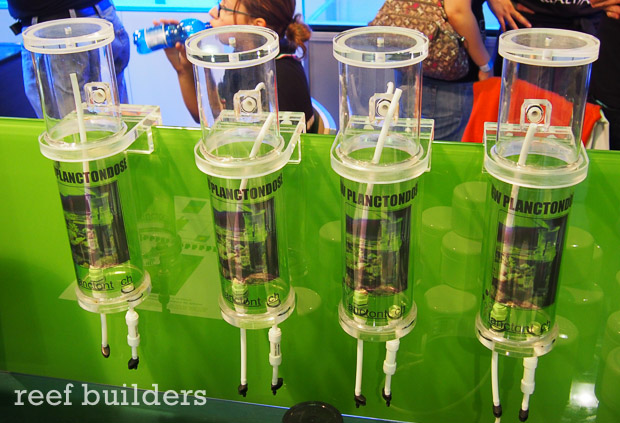On our recent reefing tour of Italy we expected many things, great food, stylish reef aquarium setups and an overall easy-going laid back atmosphere. We got to see all of those things but what we didn’t expect to see was so many gosh darn phytoplankton reactors!
In America and as far as we know, in the general marine aquarium scene, phytoplankton reactors are known about but not really used deliberately outside or relatively niche applications. If you really want to grow sponges and other filter feeders, or need a constant supply of fresh phytoplankton to feed rotifers in a fish larval culture set up, that’s when you might call in a phytoplankton reactor.

However at PetsFestival in Italy we couldn’t believe the sheer number and diversity of phytoplankton reactors being offered to the reefing public. We already showed you the LGMAquari phytoplankton reactor with its novel ‘fiber optic’ light nozzle and battle-ready acrylic construction. However at this particular conference there were at least half a dozen other phytoplankton reactor models on display, from the simplest plastic tubes with inlets and outlets all the way up to fully automated models.

Of the phytoplankton reactors on display, at least two companies specialized in home phytoplankton culture with supplements to feed the phyto, care guides and so much attention to the little photosynthetic green cells you’d think that they were the ornamental creature. One company called Planctontech even has this crazy automated phytoplankton culture system replete with peristaltic pumps, timers and a controller to automate the entire phyto culture and feeding system!
We love phytoplankton as much as the next reefer guy but we still haven’t quite figured out what the outsize emphasis on live food culturing is coming from in the Italian reefing community. With all this live phytoplankton and subsequently zooplankton being produced in Italy, the reefing community there is poised to really dive into breeding marine fish and breaking some ground with the keeping and growing of non photosynthetic corals and invertebrates.




